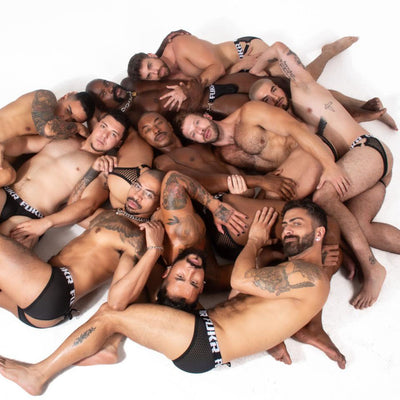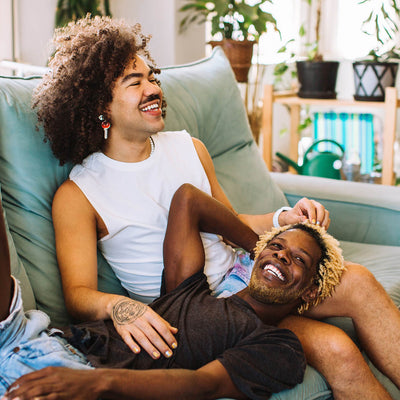Gay Marriage: Does A Ring Make A Difference?
Article by Nicholas Velotta
There was a lot of built up anxiety (mostly from the right) surrounding how same-sex marriage would forever alter American family and mating patterns. TV pundits, conservative politicians and religious leaders often focused on same-sex parenting, adoption rights, relationship durability, and ominous “slippery slope” scenarios where hypothetically legalizing same-sex marriage would lead to a country where humans could marry whomever or, even more perplexing, whatever they felt like. Thankfully in 2015, sanity prevailed and the LGBTQ community achieved the right to marry. But now, nearly four years after the Supreme Court of the United States ruled in favor of same-sex marriage, can we say gays and lesbians getting married has really changed anything?
Anecdotally, many of us now know couples who have gotten married since the legalization of gay marriage. A 2017 Gallup poll confirms that a little over 10 percent of same-sex couples are now married, compared to 7.9 percent of couples prior to 2015. What’s more, the number of same-sex cohabitating couples who are now married is an astonishing 61 percent today, compared to 38 percent during pre-legalization times.
Marriage is becoming a capstone feature of many LGBTQ relationships, which is revolutionary when you think about it. And, previous research found that married same-sex couples as well as those that are in “marriage-like” partnerships (such as civil unions and domestic partnerships) are very similar to opposite-sex marriages in terms of stability and dissolution rates. Having said that, new research by Joyner and colleagues (2017) suggests that gay relationships look differently from lesbian ones, and both vary from opposite-sex marriages in important ways.
For one, lesbian spouses who live together tend to have the highest dissolution rates compared to both gay spouses and opposite-sexed spouses. This pattern could be explained by many factors, one of which being intersectionality, or the phenomenon of inhabiting multiple minority identities at once. For instance, a poor (minority status one), Hispanic (minority status two), lesbian (minority status three) would face stigma from all of these pieces of her identity and these social pressures may interfere with her marriage in ways we don’t understand yet. Another reason may be that individuals who grew up in intensely stigmatized situations are more likely to have trouble forming and maintaining relationships in general.
But now, nearly four years after the Supreme Court of the United States ruled in favor of same-sex marriage, can we say gays and lesbians getting married has really changed anything?
Anecdotally, many of us now know couples who have gotten married since the legalization of gay marriage. A 2017 Gallup poll confirms that a little over 10 percent of same-sex couples are now married, compared to 7.9 percent of couples prior to 2015. What’s more, the number of same-sex cohabitating couples who are now married is an astonishing 61 percent today, compared to 38 percent during pre-legalization times.
Marriage is becoming a capstone feature of many LGBTQ relationships, which is revolutionary when you think about it. And, previous research found that married same-sex couples as well as those that are in “marriage-like” partnerships (such as civil unions and domestic partnerships) are very similar to opposite-sex marriages in terms of stability and dissolution rates. Having said that, new research by Joyner and colleagues (2017) suggests that gay relationships look differently from lesbian ones, and both vary from opposite-sex marriages in important ways.
For one, lesbian spouses who live together tend to have the highest dissolution rates compared to both gay spouses and opposite-sexed spouses. This pattern could be explained by many factors, one of which being intersectionality, or the phenomenon of inhabiting multiple minority identities at once. For instance, a poor (minority status one), Hispanic (minority status two), lesbian (minority status three) would face stigma from all of these pieces of her identity and these social pressures may interfere with her marriage in ways we don’t understand yet. Another reason may be that individuals who grew up in intensely stigmatized situations are more likely to have trouble forming and maintaining relationships in general.
 On the other hand, marriage (when healthy) can actually safeguard against environmental stressors like those described above. A pilot study out of the University of Washington observed that married lesbians and gays had higher levels of life satisfaction and greater overall health than their unmarried counterparts.
Of course, some factors that impede or promote marital success have little to do with sexuality; partners who have greater disparities in age or race are more likely to split up. Same-sex couples in higher socioeconomic brackets were more likely to separate too, perhaps because they had the financial security to do so. Interestingly, this last finding runs counter to patterns seen in heterosexual marriages, which are more likely to dissolve when both spouses are in lower socioeconomic brackets.
Even with all these potential causes of divorce however, most experts agree that marriage adds an extra form of protection for couples (gay, straight, or otherwise). Why? Well, for one, there’s a legally binding obligation to try to work things out before calling it quits. What’s more, the majority of spouses experience social pressure to stay together. Others are motivated by the desire to prevent erosion of social networks they share with their significant other, or even because of the possible embarrassment they would feel from a failed marriage. And if those aren’t enough reasons to stick it out, couples also benefit financially from being married.
On the other hand, marriage (when healthy) can actually safeguard against environmental stressors like those described above. A pilot study out of the University of Washington observed that married lesbians and gays had higher levels of life satisfaction and greater overall health than their unmarried counterparts.
Of course, some factors that impede or promote marital success have little to do with sexuality; partners who have greater disparities in age or race are more likely to split up. Same-sex couples in higher socioeconomic brackets were more likely to separate too, perhaps because they had the financial security to do so. Interestingly, this last finding runs counter to patterns seen in heterosexual marriages, which are more likely to dissolve when both spouses are in lower socioeconomic brackets.
Even with all these potential causes of divorce however, most experts agree that marriage adds an extra form of protection for couples (gay, straight, or otherwise). Why? Well, for one, there’s a legally binding obligation to try to work things out before calling it quits. What’s more, the majority of spouses experience social pressure to stay together. Others are motivated by the desire to prevent erosion of social networks they share with their significant other, or even because of the possible embarrassment they would feel from a failed marriage. And if those aren’t enough reasons to stick it out, couples also benefit financially from being married.
 So, should we all be trying to tie the knot? Sure, if that’s what you want. The data suggests marriage may boost your chances at making it long-term. Gay and lesbian marriages are also some of the most progressive pairings out there with little-to-no gender roles and egalitarian power dynamics. Plus, if you want children, married couples are given preferential treatment by adoption agencies. But the consequences of a divorce are not to be overlooked, and gay couples have been making due without marriage for quite some time. It’s important to note, too, that polyamorous gays should be especially judicious before officiating their love since the U.S. still doesn’t recognize plural marriages.
So, should we all be trying to tie the knot? Sure, if that’s what you want. The data suggests marriage may boost your chances at making it long-term. Gay and lesbian marriages are also some of the most progressive pairings out there with little-to-no gender roles and egalitarian power dynamics. Plus, if you want children, married couples are given preferential treatment by adoption agencies. But the consequences of a divorce are not to be overlooked, and gay couples have been making due without marriage for quite some time. It’s important to note, too, that polyamorous gays should be especially judicious before officiating their love since the U.S. still doesn’t recognize plural marriages.
Nicholas Velotta is a sex and relationship researcher and writer located out of the University of Washington in Seattle.




